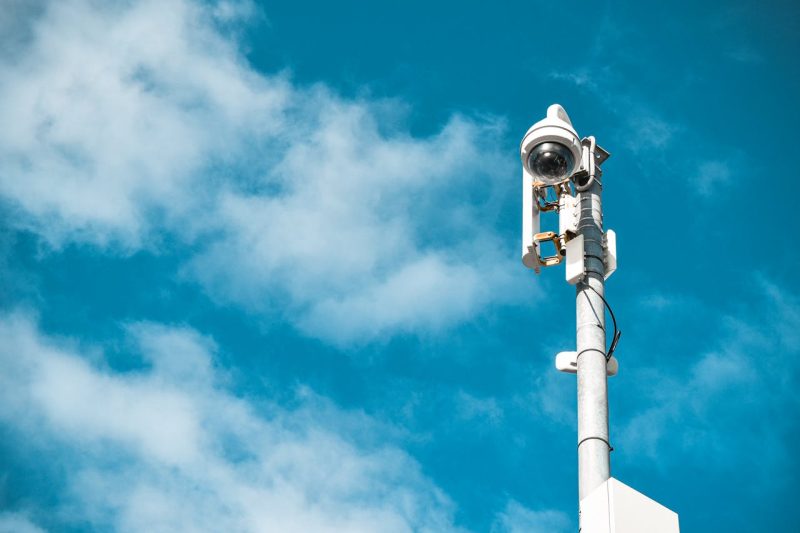Workplace safety used to mean checking boxes on paper forms and hoping for the best. Now technology actively prevents harm before it happens. Sensors catch risks invisible to human eyes. Alerts reach the right people instantly. Machines handle dangerous tasks so workers stay safe. This isn’t theory—it’s daily reality in modern workplaces where protection operates without slowing work down. Let’s look at how technology is changing safety standards in the workplace.
Quicker Hazard Detection and Monitoring
Old hazard checks relied on someone walking through with a clipboard once a week. That left dangerous gaps, like a frayed wire smoldering unnoticed for days or a chemical leak starting small. Today’s sensor networks never sleep. Thermal cameras catch overheating equipment long before it visibly starts throwing smoke. This timely intervention allows your employees to shut down the equipment in a timely & safe manner. Air quality monitors track invisible threats like carbon monoxide. If the sensors detect a higher presence, they automatically adjust ventilation before employees come under risk.
Motion sensors analyze movement patterns: they recognize a worker bending to tie a shoe versus someone who’s actually fallen, triggering alerts only when help is truly needed. These systems adapt to your specific space. They learn that the night shift crew regularly accesses the server room, but flag an unfamiliar person there at odd hours. Real risks get caught as they emerge: a spill in a busy aisle during shift change, blocked fire exits hidden by temporary storage, or equipment vibrating abnormally. Partnering with commercial security systems ensures these tools integrate smoothly into your daily flow without adding new headaches. Safety stops being a scheduled chore and becomes constant, reliable oversight that prevents incidents before they start.
Remote Monitoring and Communication
You no longer need to be on-site to keep your workplace safe. Cloud platforms put building status in your pocket via your smartphone. If you have the right tech, you can check live camera views from your phone while stuck in traffic, verify all doors are locked after hours, or confirm fire alarms are functional during a storm. During emergencies, this changes everything. Suppose smoke detectors activate in a storage area. In that case, you don’t just hear a generic alarm. You get a notification showing exactly which zone is affected, with live video and step-by-step instructions.
Teams coordinate instantly: evacuation routes update on every employee’s screen as conditions change, security sees real-time footage before arriving, and managers guide responses from anywhere. Routine checks become effortless. They verify all emergency exits are clear during lunch rush with a few taps instead of disrupting workflow with physical walkthroughs. This isn’t about fancy tech. It’s practical clarity when seconds count. Information flows without bottlenecks, turning chaotic scrambles into calm, coordinated action. You see problems as they happen and act before small issues become disasters.
Wearable Safety Technology Gains Momentum
Workers increasingly rely on practical wearables that protect without disrupting their tasks. Basic wristbands track heart rate and body temperature, sending alerts to supervisors when heat stress begins to set in. Helmets with integrated sensors identify dangerous gas concentrations before workers feel symptoms. Vests with movement detectors notify employees when they’re approaching moving machinery too closely. These tools function seamlessly within daily routines rather than requiring extra steps.
Warehouse staff use lightweight devices that gently vibrate when lifting techniques could cause strain, stopping back injuries before they occur. Construction crews benefit from boots that sense slipping motions and provide immediate feedback to regain balance. Effective systems deliver information through simple cues that don’t require workers to stop their tasks and check screens. Safety technology works best when it integrates with standard work clothing instead of feeling like additional equipment. These practical tools support workers’ experience by providing timely information exactly when needed, allowing them to stay focused on their jobs while staying protected.
Automation and Robotics
Robots handle the dangerous jobs, removing any safety concerns for your employees. One such example is remotely-operated carts. They move heavy objects through aisles in warehouses. Having them around mitigates the chances of your employees suffering back injuries from lifting or collisions with forklifts. In addition to a safer work environment, such tech frees your employees to focus on tasks more suited to their talents. Many workplaces now use drones to inspect high-rack storage or roof hazards. Since drones can check these things, it removes the need to send workers up ladders. Automated guided vehicles transport materials in factories, stopping instantly if someone steps into their path.
Even safety maintenance gets upgraded: robotic arms test fire suppression nozzles in cramped ceiling spaces, while software scans access logs nightly to flag odd patterns like after-hours logins. This isn’t replacing workers. It’s removing humans from harm’s way. Smart doors won’t close if someone’s in the way. Wearable sensors alert the users so they can change the respirators timely. Automated systems handle repetitive, high-risk tasks. When your employees steer clear of such risks, they feel more motivated and present better results. The result? Fewer injuries, less downtime, and happy workers without any concern for their safety.
Final Words
Technology has rewritten the rules. Hazards get caught at the earliest stage: before smoke, before injuries, before panic. Communication flows without delays during critical moments. Machines shoulder dangerous tasks so your team stays whole. This shift makes safety feel natural – not a disruption but part of how work gets done. The best systems operate so smoothly they fade into the background: sensors hum without drawing attention, alerts fit into existing routines, and robotic helpers blend into daily operations. Safety isn’t about fearing disasters anymore. It’s about building workplaces where threats never get the chance to happen, and your people work without worry. When protection works invisibly yet effectively, it stops being a cost and starts enabling everything you do.



